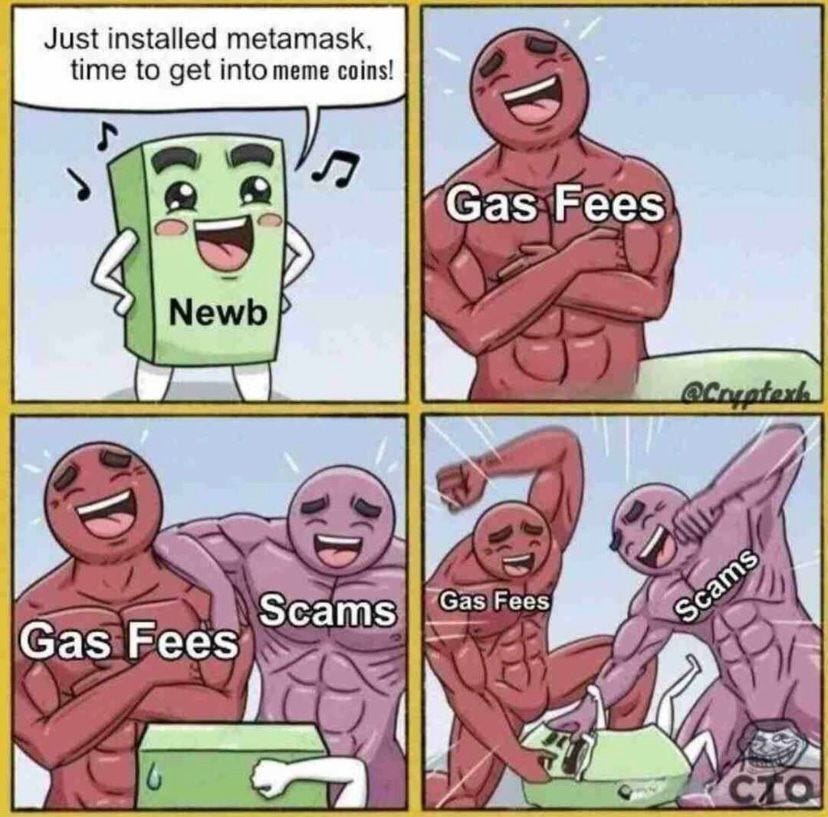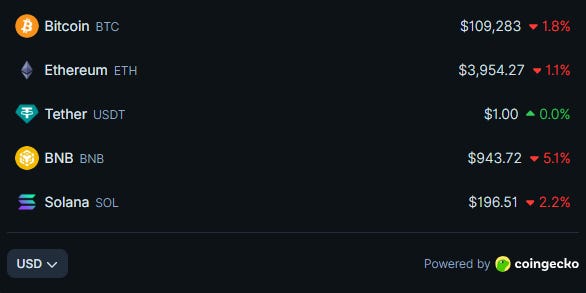Is Web3 falling into the trap of digital fragmentation?
Why today’s scattered digital experience may be repeating itself on-chain.
gm Web3 Digesters,
Hope you’re doing well🌞.
Let’s talk about something we all feel but rarely pause to notice—how scattered our digital lives have become.
Today’s digital life is fragmented with systems built in silos.
Web3 promised to fix this with a borderless, interoperable internet. But what we’re seeing looks eerily familiar: walled gardens and siloed platforms.
Is the decentralized future already repeating Web2’s biggest mistake?
The Modern Day Digital Chaos
Modern-day systems are built in silos that seldom communicate with each other.
Messages on WhatsApp. Work on Slack. Communities on Discord and Telegram. Payments on a bunch of mobile apps.
Every part of our lives lives in different silos. We spend more time switching between apps than actually connecting and being productive.
Here’s a staggering fact: The average worker switches between 35 applications over 1,100 times per day
And it’s quietly draining productivity, morale, and budgets across organizations.
Different countries and companies are developing technology standards that aren’t compatible, creating barriers between markets.
The result of this inefficiency?
User fatigue and drop-off
Security and privacy risk
Broken communication and data silos
The internet was meant to connect us. Instead, it’s splitting us into digital islands.
The Promise of Web3
Web3 promised a borderless, decentralized internet—one where power is distributed and ownership returns to the users.
But somehow, that same promise has also bred complexity.
With countless blockchain networks, DApps, and layer-dependent projects, the ecosystem has splintered into fragments.
No surprise then that Alex Gluchowski, CEO of Matter Labs (the team behind ZKsync), calls fragmentation the next big challenge for blockchain.
Today, navigating Web3 feels like taking three connecting flights just to reach one city—Ethereum, Bitcoin, and a side-chain. Each stop piles on tickets, checks, fees, and delays, turning the journey into an exhausting experience.
Ironically, the decentralization that gave Web3 its power is also what fuels its fragmentation.
In chasing the blockchain trilemma—balancing decentralization, scalability, and security—each chain makes its own trade-offs. Together, those choices fracture the broader Web3 experience.
The cost of fragmentation
For users, fragmentation is an everyday struggle. What should be as simple as sending money or using an app becomes a maze of wallets, swaps, bridges, and hidden fees.
Web3 already comes with its own learning curve, and fragmentation only makes it steeper. It raises the barrier to entry, creates missed opportunities, and leaves users more exposed to risks and scams.
Instead of the seamless, user-first internet Web3 promised, most people face a confusing patchwork that shuts out newcomers and wears down even veterans.
This begs the question: how do we make blockchains truly interoperable?
Bridging the divide
The most promising solutions to this challenge are bridging and chain abstraction.
Bridging creates pathways between ecosystems, allowing assets and data to move across networks.
Protocols like LayerZero, Wormhole, and Axelar are building more secure, trust-minimized ways to transfer value across chains.
Chain abstraction takes it further by hiding the complexity altogether. Instead of worrying about what chain they’re on, users should interact seamlessly through tools like account abstraction wallets (Particle Network) or cross-chain execution platforms such as Polygon’s AggLayer and Cosmos’ IBC.
GVNR aims to unify the fragmentation of Web3 and unlock Bitcoin DeFi for every chain.
Together, these approaches signal a shift: from making blockchains compete, to making them collaborate for a unified Web3 experience
The road to mass adoption
Fragmentation may be Web3’s biggest hurdle, but it’s not a dead end. With better bridges, smarter abstraction, and user-first design, the industry is inching closer to the seamless experience it once promised.
The challenge now is clear: turn decentralization’s complexity into a user experience so smooth that people stop thinking in chains and start thinking in possibilities.
Web3 will win when users stop asking which chain they’re on and simply enjoy the seamless experience.
Meme of the Day 😁
Trivia Corner 🧩
On average, how many different apps do people switch between daily for messaging, payments, and communities?
a) 3–4
b) 5–6
c) 7–8
d) 10+
In The News
Binance and Franklin Templeton partner on tokenization
Cracked Labs launches BattleCodes: Turning crypto events into a sport
Bitcoin price cycles ’getting longer’ as new forecast says $124K not the top
DOGE Eyes $0.28 as Dogecoin ETF Catalyst Leads to ‘Pennant Breakout’
Shiba Inu Looks to Scale 200-day SMA as DOGE Whales Boost Coin Stash to 10B
Crypto Price Update
Stay in the know for all things Web3! Be a part of our vibrant community and catch every exciting development.




